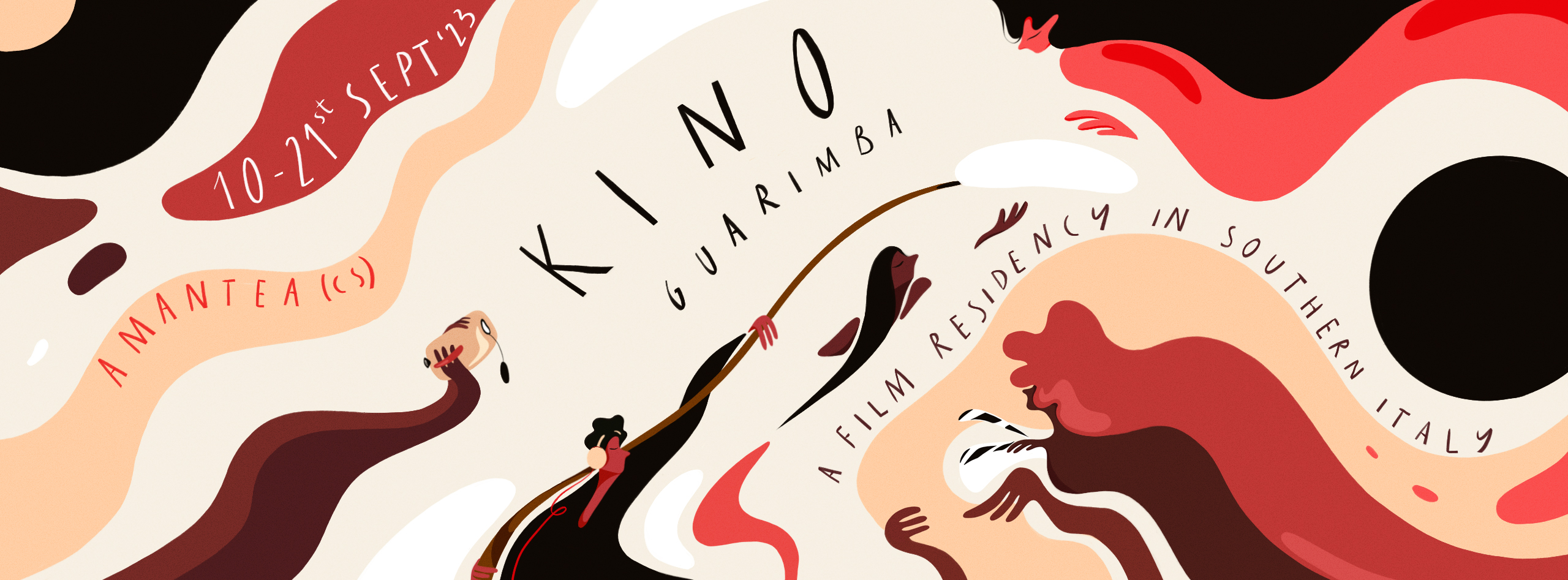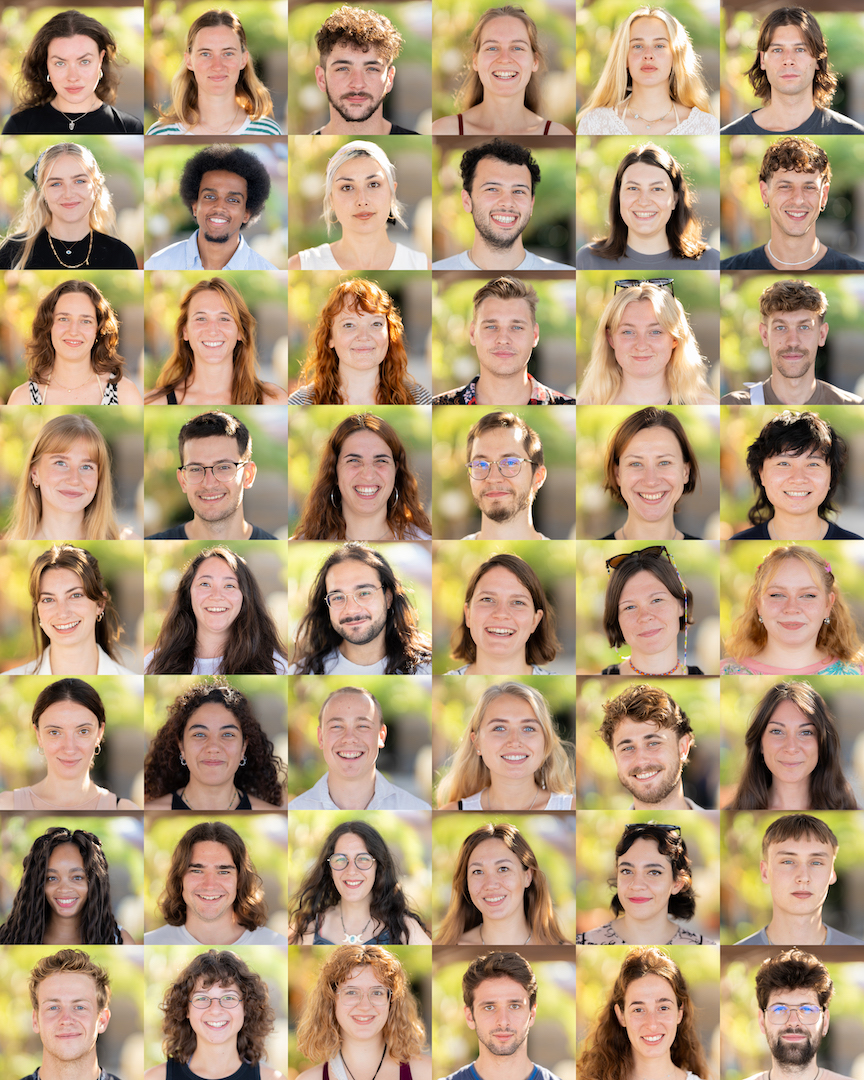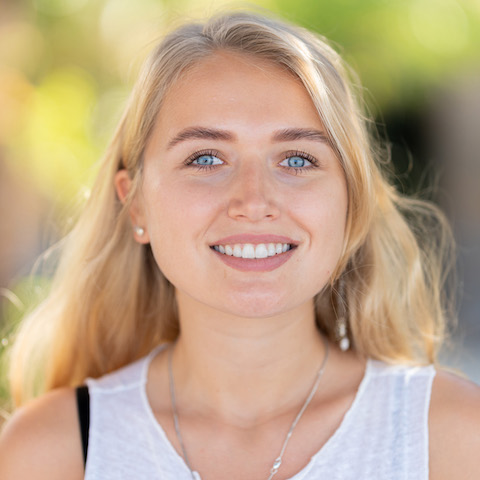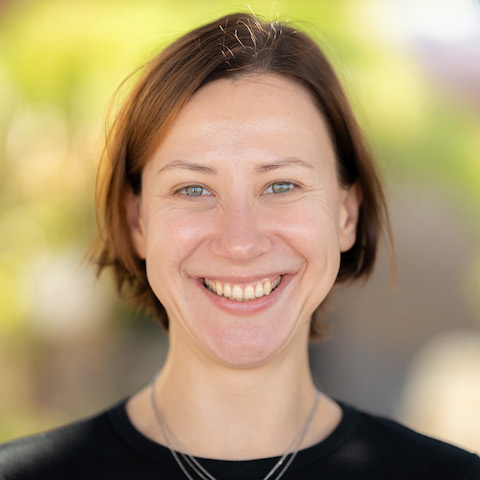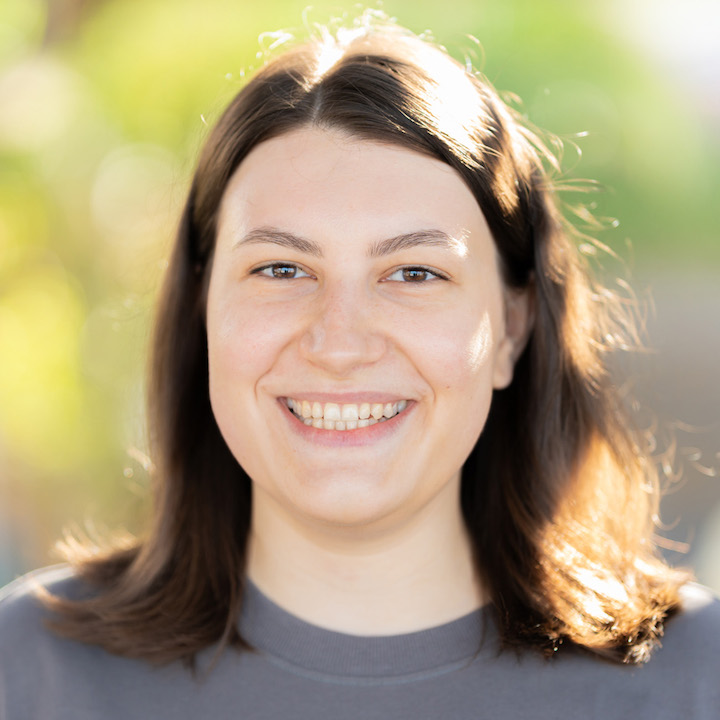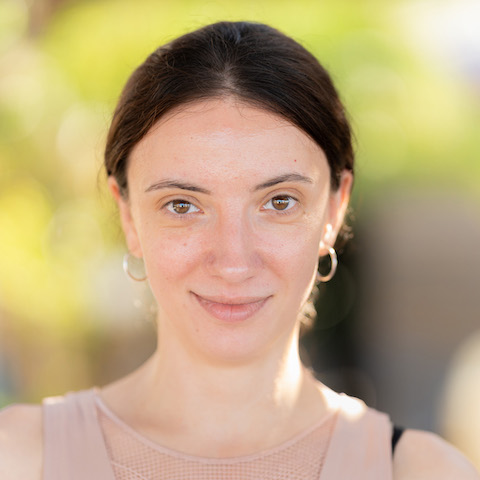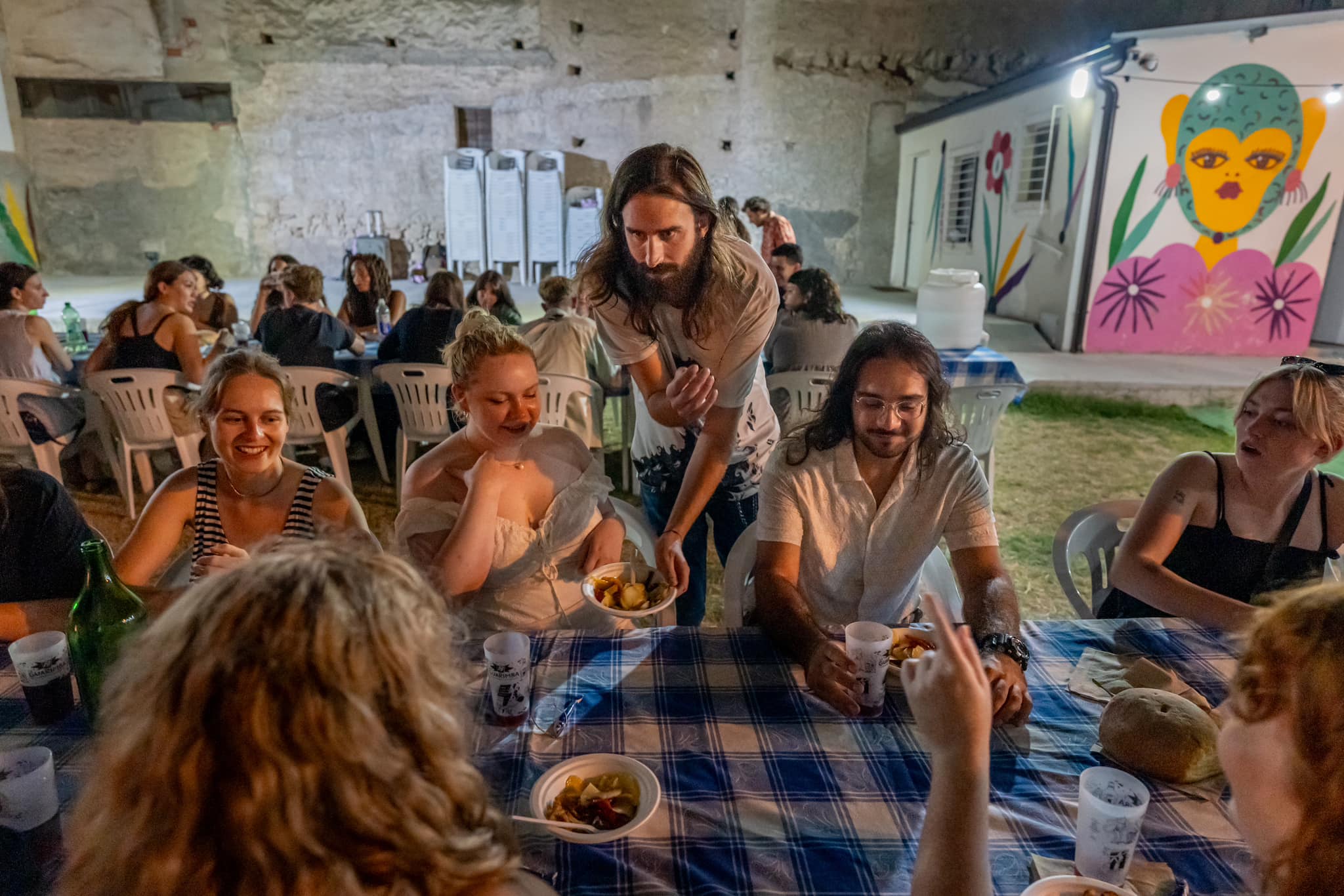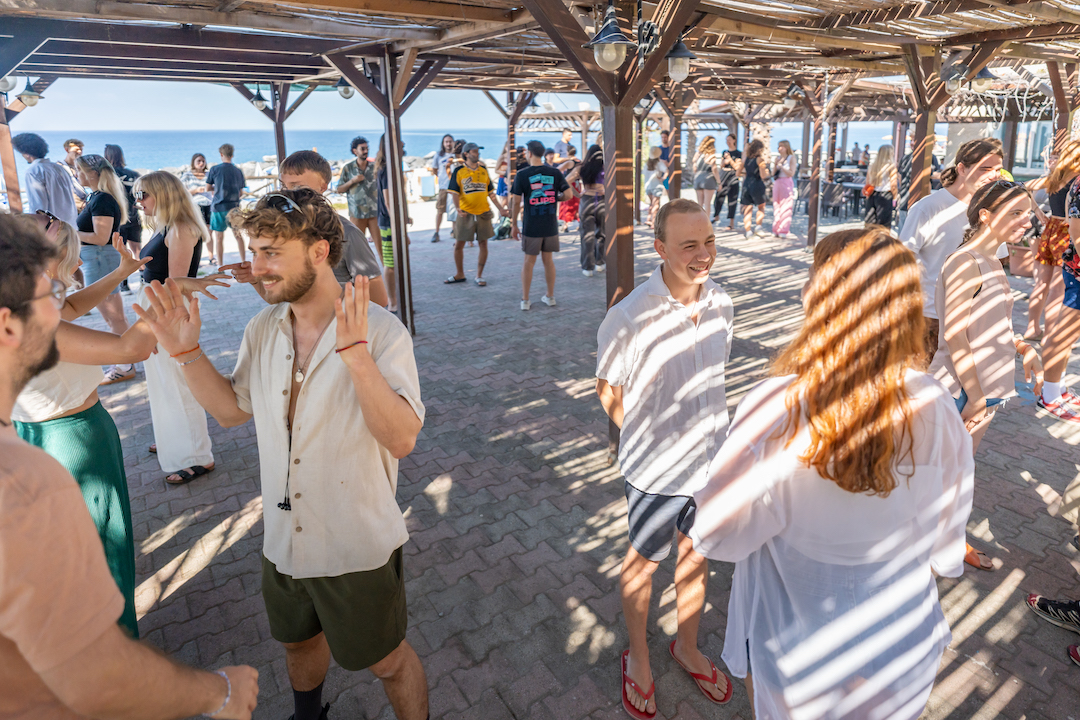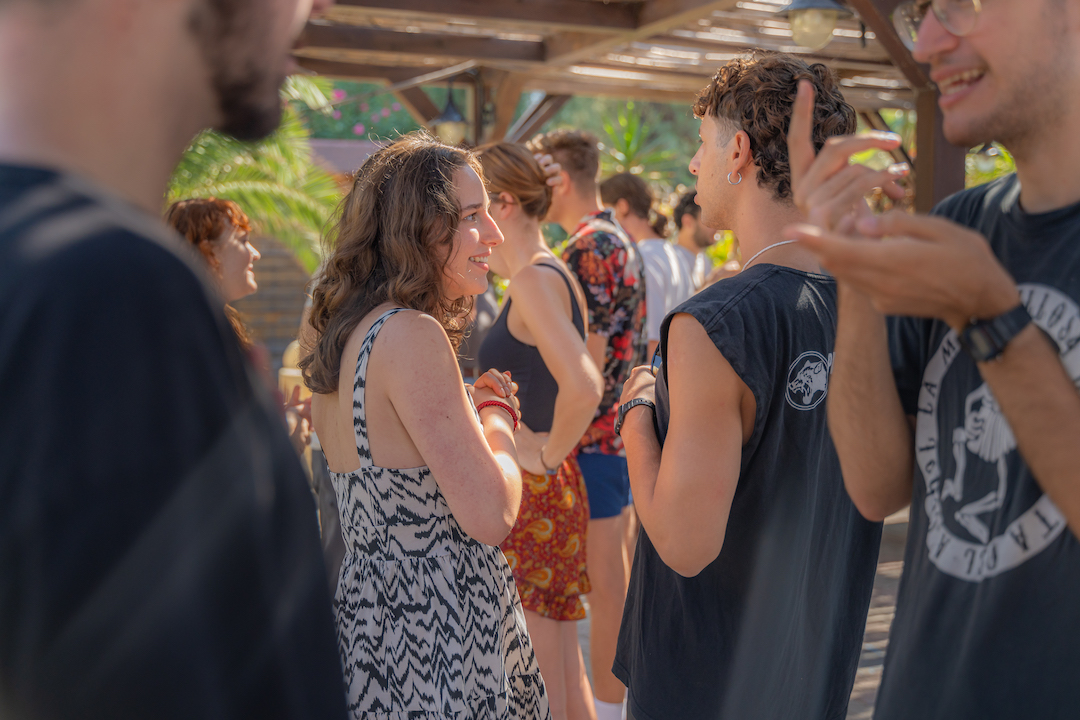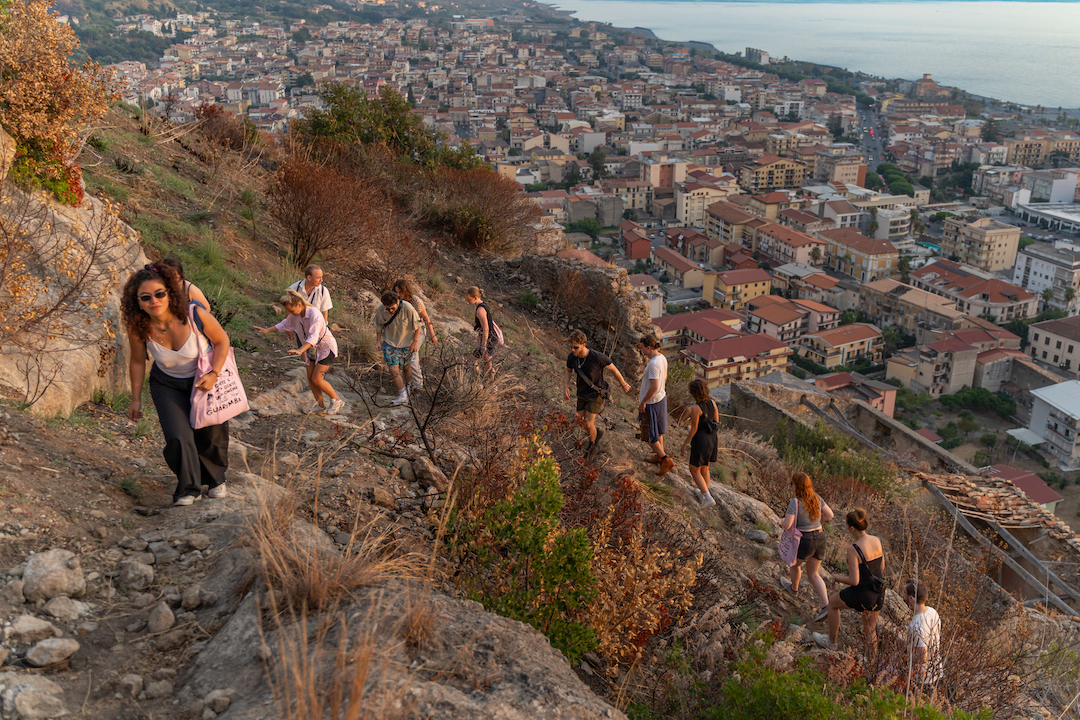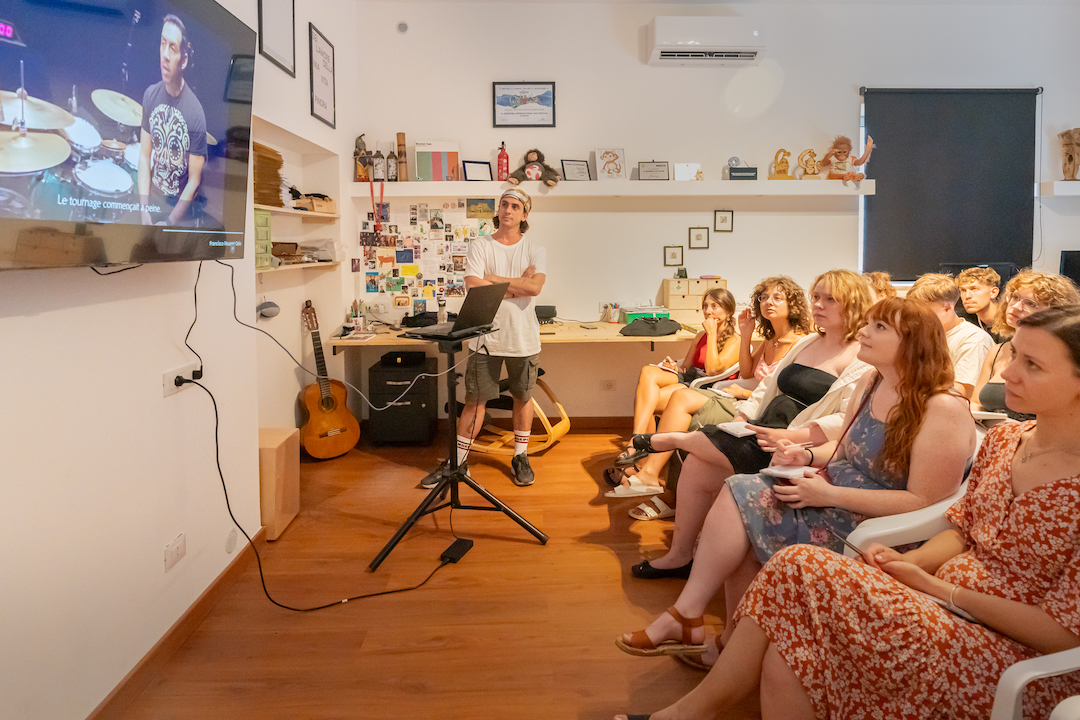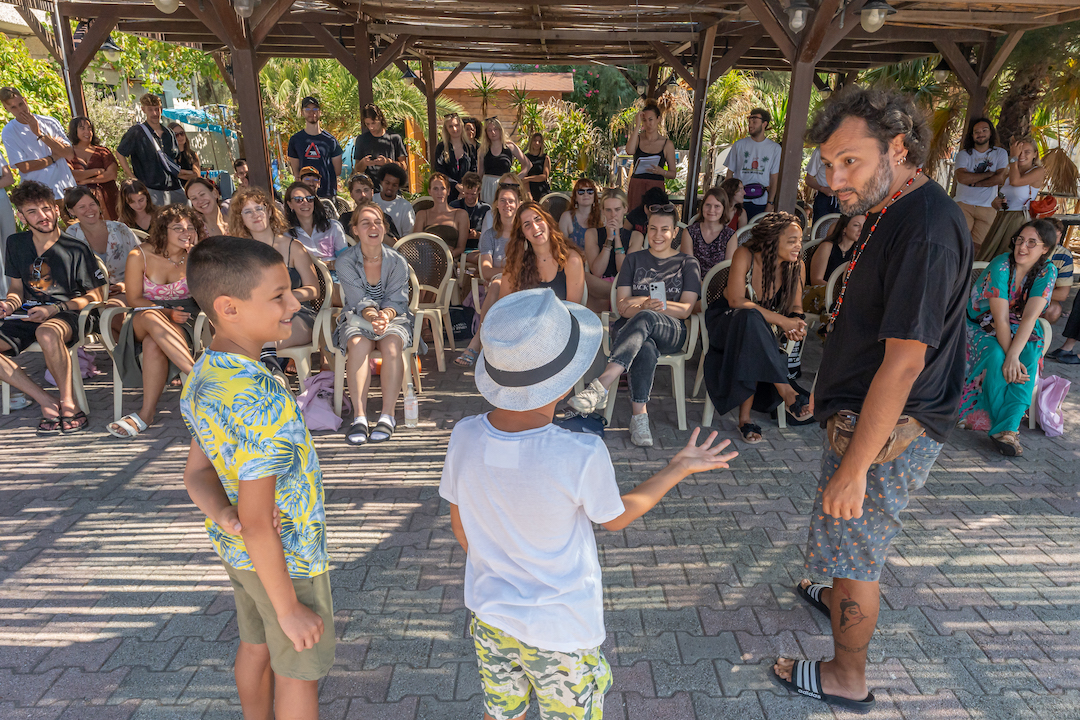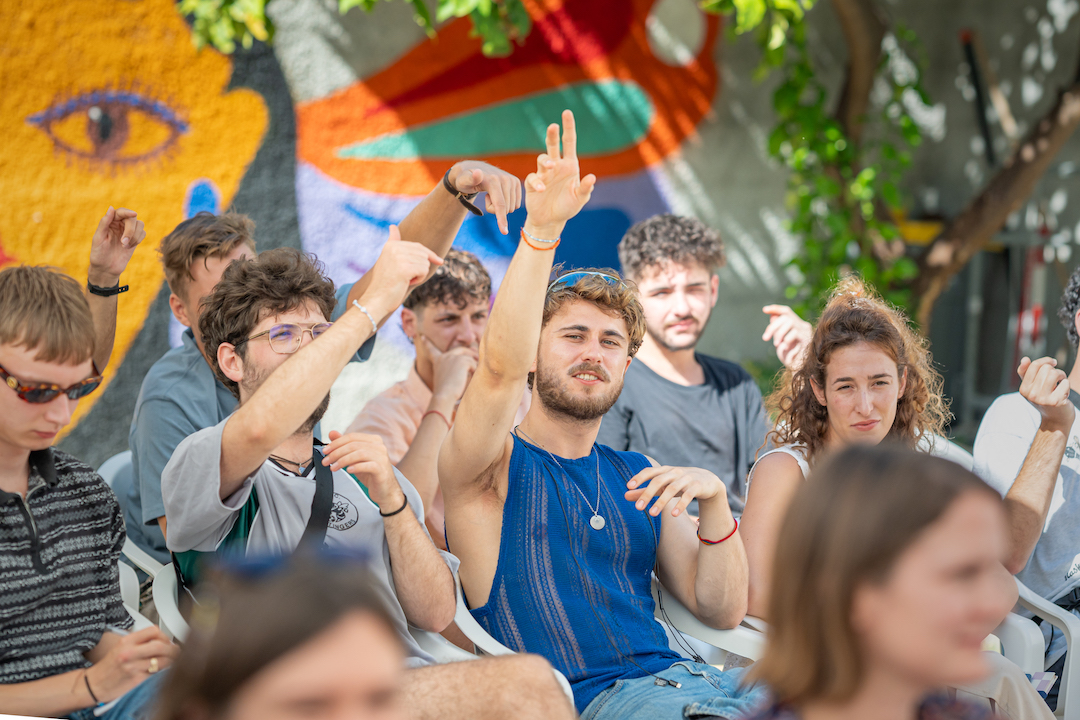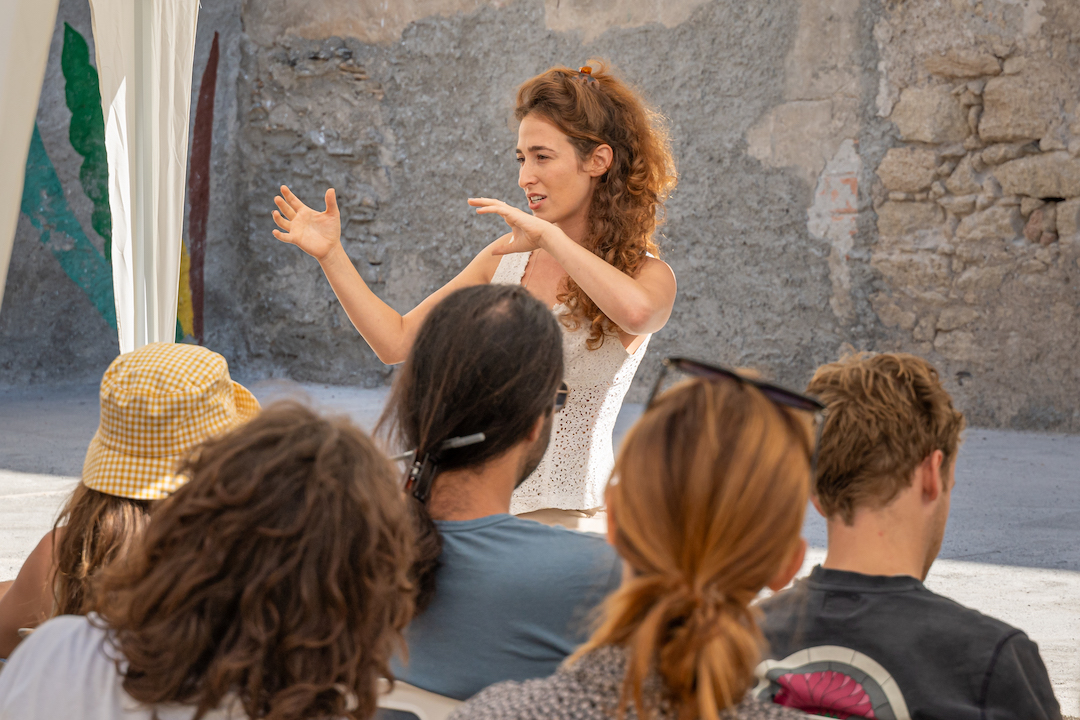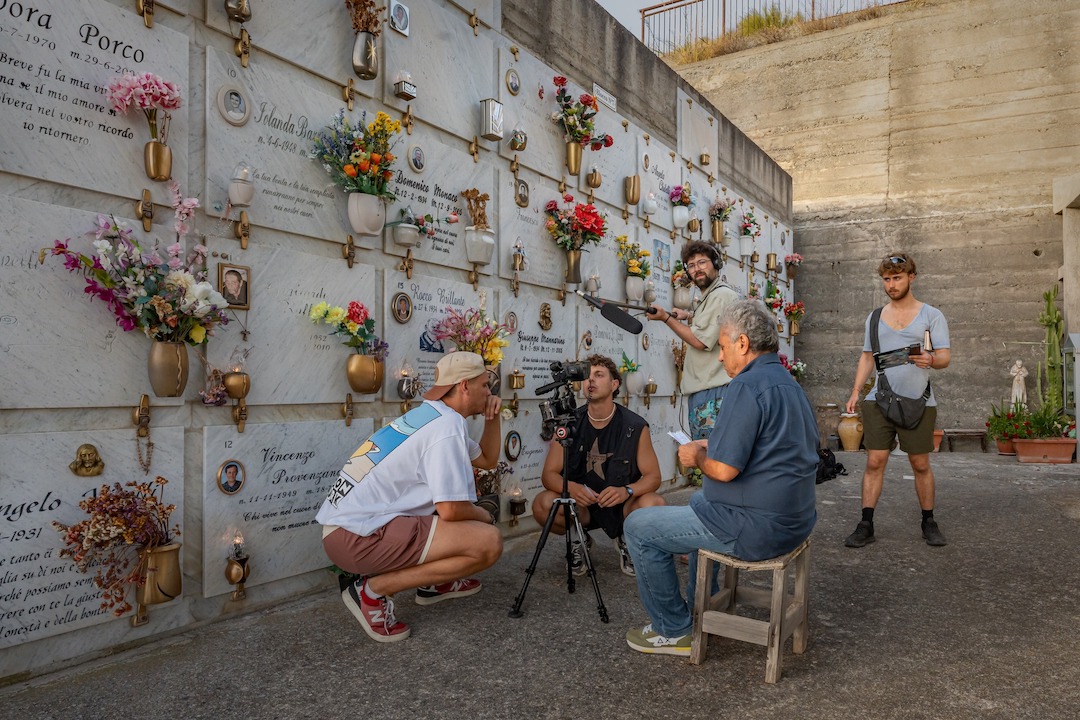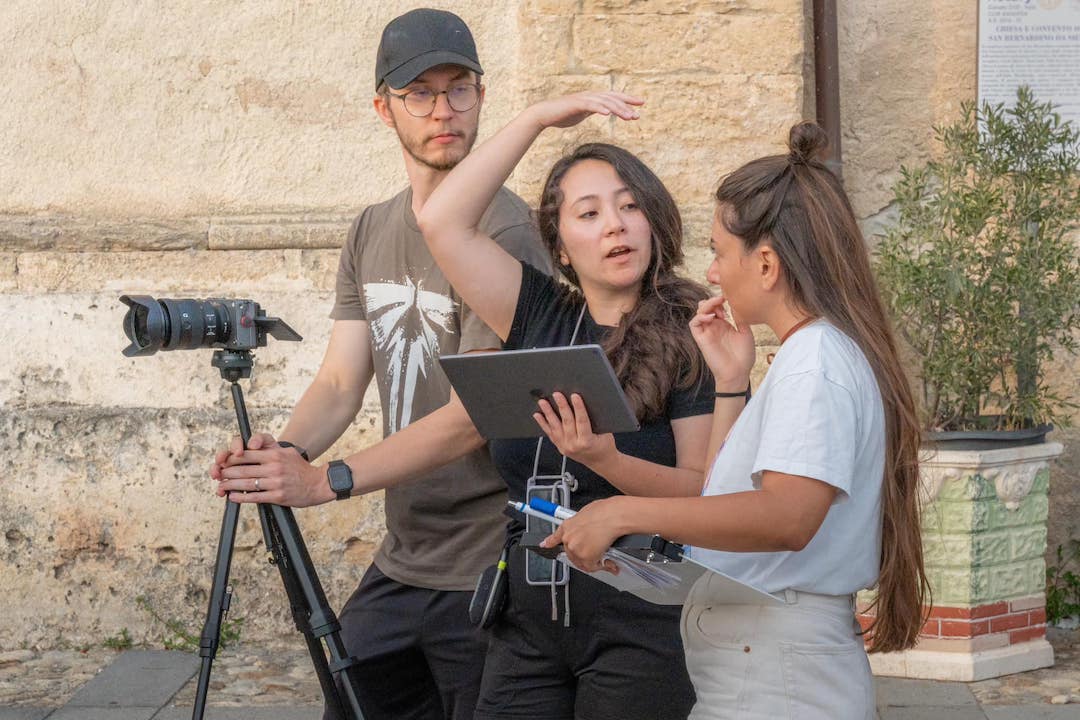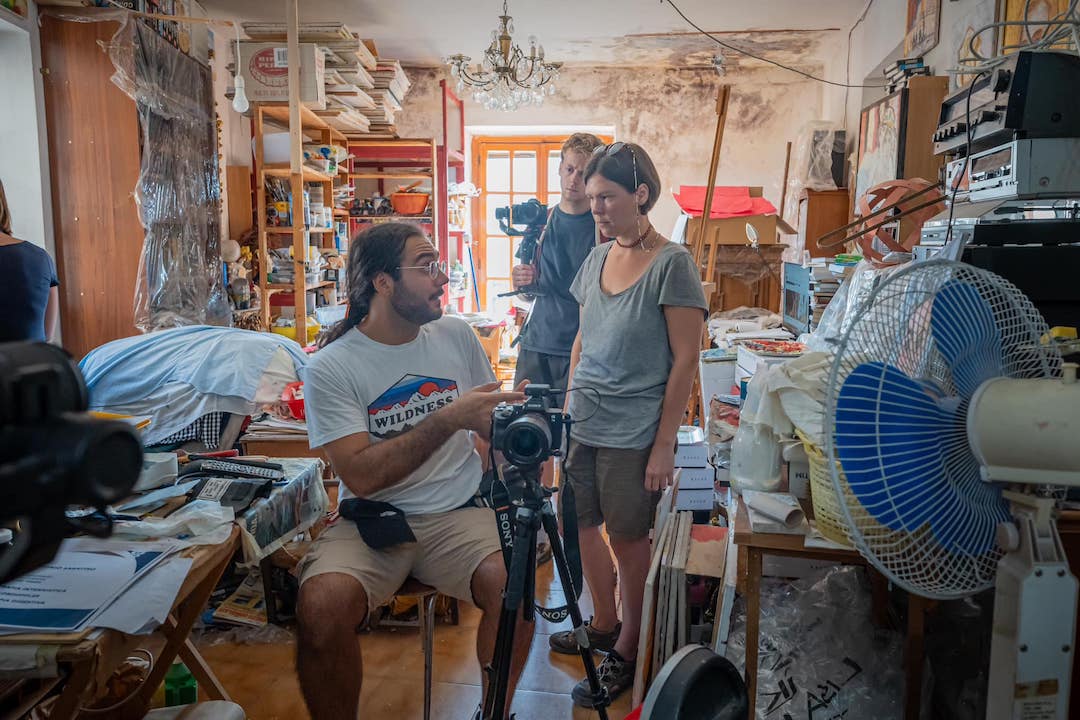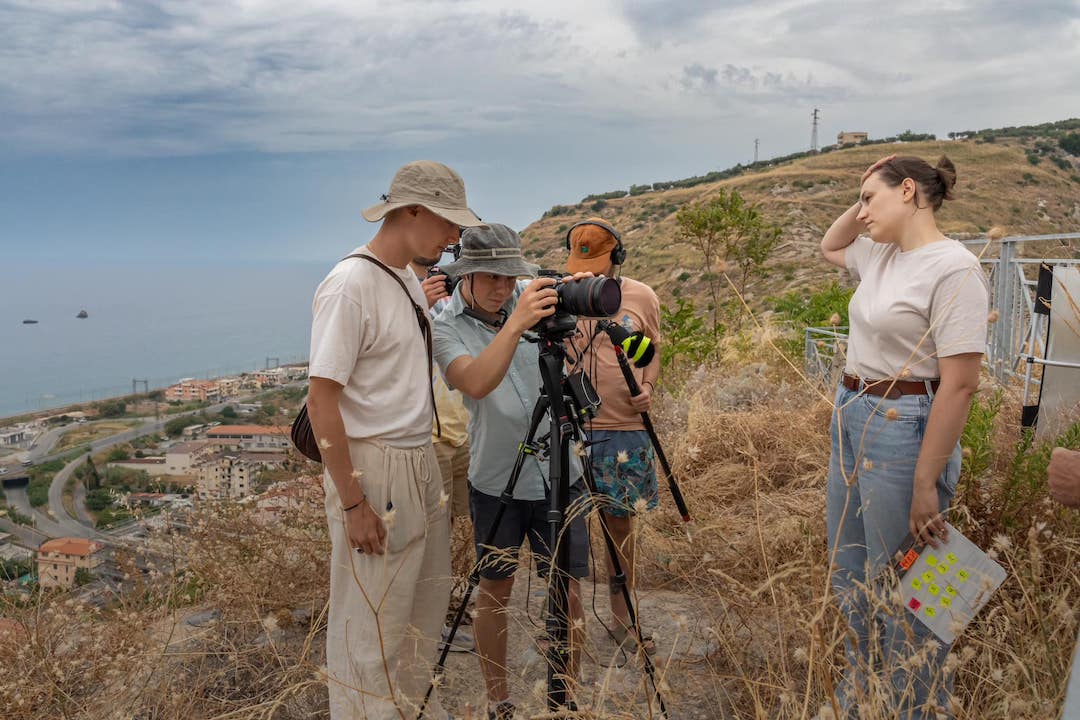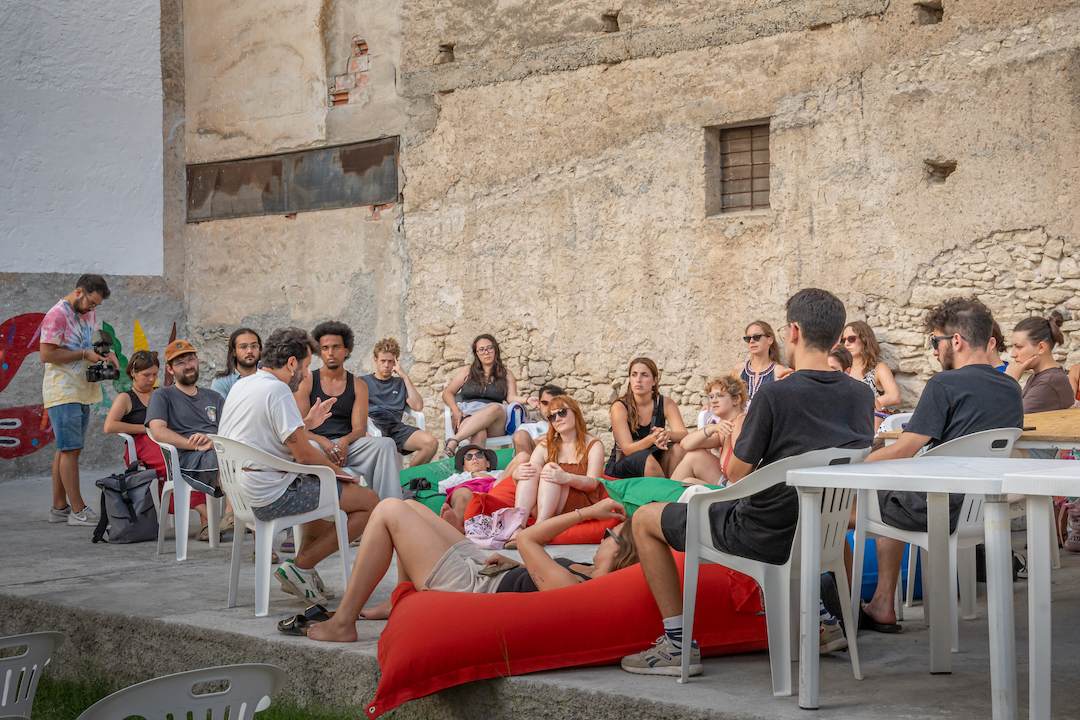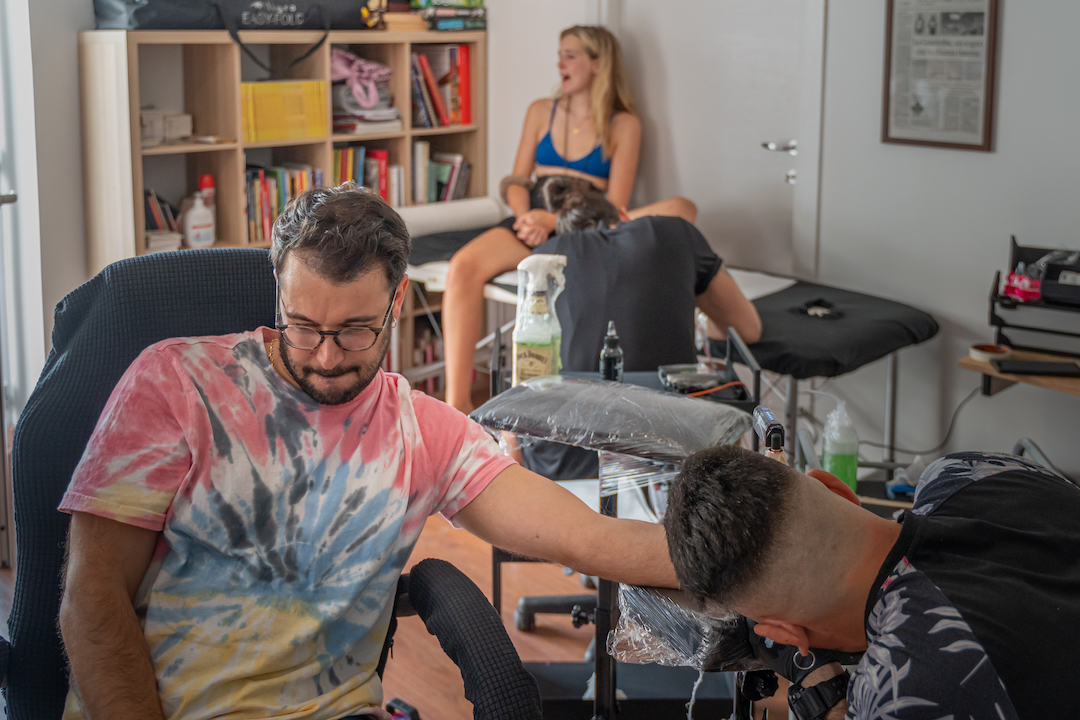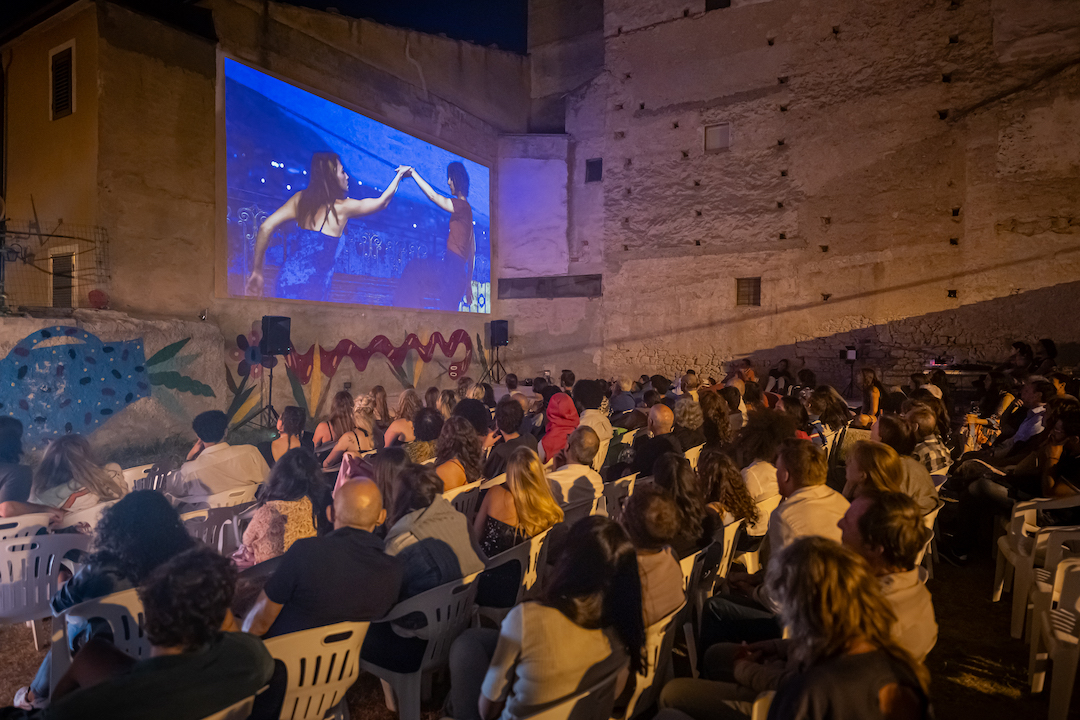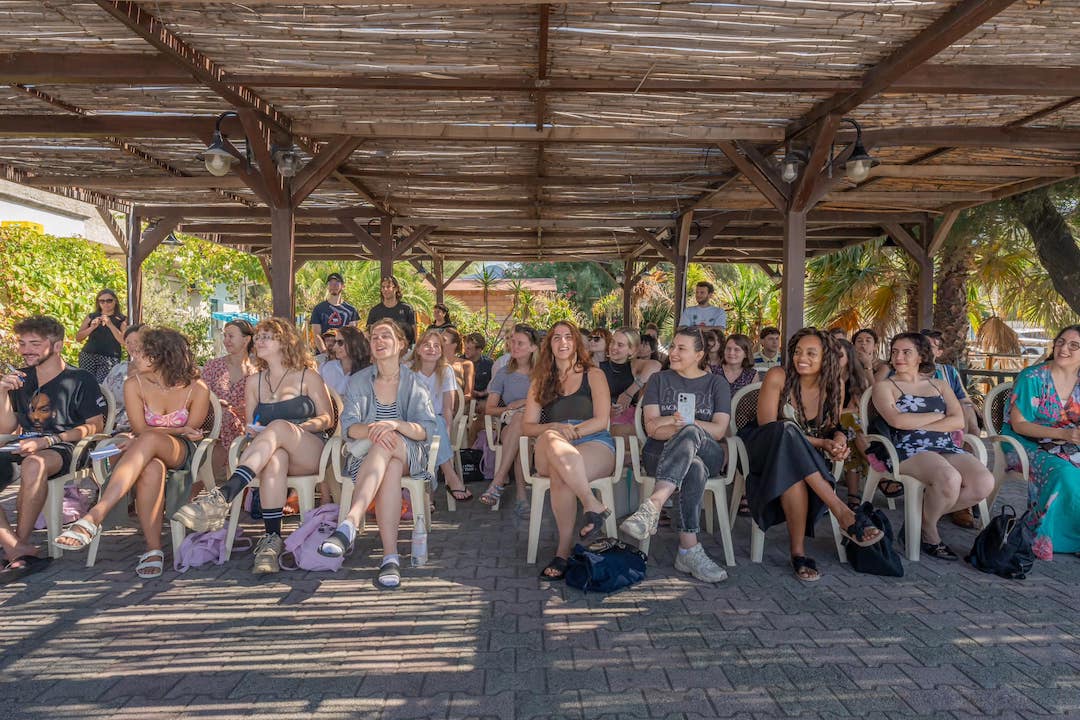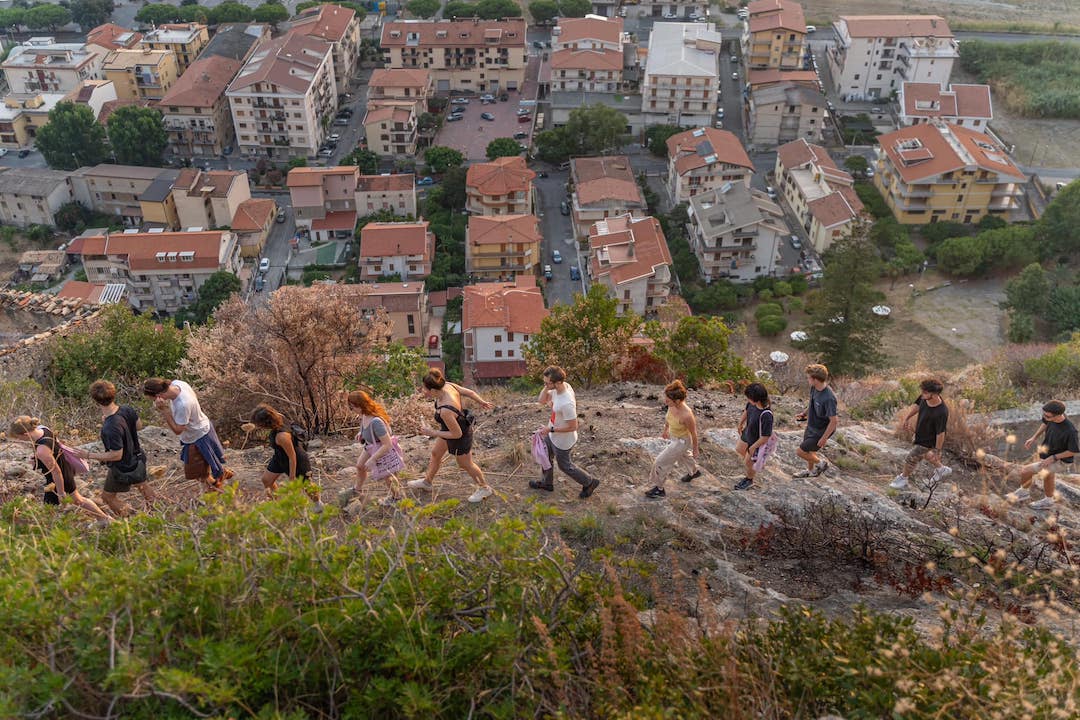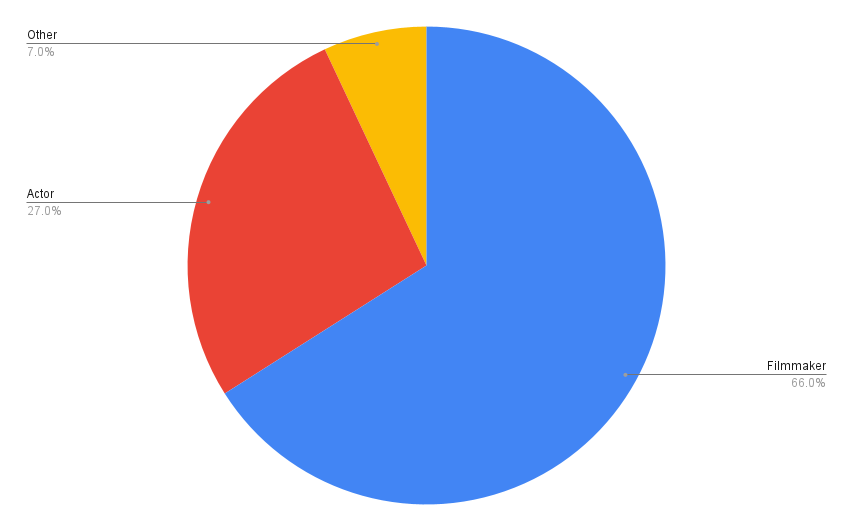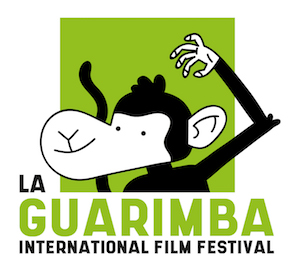As every year, we built a multicultural and heterogeneous community in terms of experiences, profiles and personalities.
The average age was 27, and the most represented age group was 25-30 (29 people). Very young students and professionals were also very present: 13 people were between 18 and 24 years old.
Among the more unique professional profiles, we hosted a makeup artist and set designer from Mexico, a dancer and performer from Veneto, and a theater and opera assistant director from Germany.
This multiculturalism was also present in the organizing team, made up of professionals from Calabria, Venezuela, Spain, and Belgium.
THE SCHOLARSHIPS FOR THE UKRAINIAN PARTICIPANTS
This year, thanks to funding from the European Commission, we were able to offer five scholarships to five artists from Ukraine. We started with this practice last year, in the 6th edition of the residency, to give support to the Ukrainian people and affirm our position against any ideology and action taken by Russia.
The scholarship included the reimbursement of the participation fee, the accommodation and a contribution of €300 to cover the travel and food expenses. The objective of this action is to be able to create a meeting ground and a safe place for Ukrainian artists, in which they can express themselves and interact with artists from all over the world.
All the scholarship recipients were working or studying in Ukraine when the war began, and their professional careers were heavily influenced by events in their country. Some of them had to emigrate to other countries, and those who remained in Ukraine had little opportunity to work in international contexts and interact with other cultures.
Lolita Zhus (born 1994) is a Ukrainian director and screenwriter currently based in Kyiv. She’s graduated in scriptwriting at the Ukrainian Film School. In 2020, she directed her first professional short film “100% Happiness”.
Lolita directed, in this residency, the film “Lido Azzurro,” a romantic comedy about linguistic incommunicability filmed at a lido in Amantea, directing an Italian actor, and a Finnish one, and working with a crew composed of Finns, Israelis and US Americans.
Olga Safronova (born 1981) is a Ukrainian actress currently based in London, where she has been involved as a linguist at the training of Ukrainian soldiers in UK for the past year. She has performed on stage (Masterskaya, AKTERSTVO) and on-screen including feature film (Good Morning Films, Mainstream Pictures), lead in TV series (Kyivtelefilm, 1+1 Production) and short films (FILM.UA). Olga has participated as an actress in several projects shot by international directors, including a music video inspired by John Lennon’s Imagine, as the lead.
Kateryna Volynets (born 1995) is a Ukrainian director, producer and editor from Kyiv, who moved to Norway after the beginning of the war. She graduated at Ukrainian Film School as a director in 2021. She got experience in directing, producing, and editing short films, working as video editor for YouTube channels, trailers, and educational video courses. For this year’s Kino, he filmed the mockumentary “Caught on Camera,” about an Italian filmmaker who is photographed during his work, a collaborative effort that involved as actors many participants from all over the world (Romania, Canada, UK, Spain, Luxembourg, Belgium, and Ukraine), a very young local actress, and a crew composed of Spanish, Ukrainian, and Romanian participants.
Anna Yutchenko (1996) is a Ukrainian director based in L’viv, with experience in video poetry, video art, and music videos. More recently, she started producing ethnographic and anthropological documentaries, about the interaction of traditional and modern cultures. Anna worked on an interesting collaborative documentary together with Dutch director Bas De Zwart and Sicilian filmmaker Sergio Calì, “Dialogue about the sea,” exploring the lost tradition of Amarean fishermen and interviewing the last witnesses of this practice.
Olha Symonenko (1987) is a Ukrainian director, historian, and producer based in L’viv. Since 2012, she works on genealogical research of families from Eastern Europe. In 2021, as part of Indie Lab Film Laboratory, she finished her first documentary short film My Petro, which was shown at the American Independence Film Festival (AIFF).
Olha has been working on a documentary project of her own that is still in the works and was not presented during the final evening, but involved Ukrainian and international participants.

